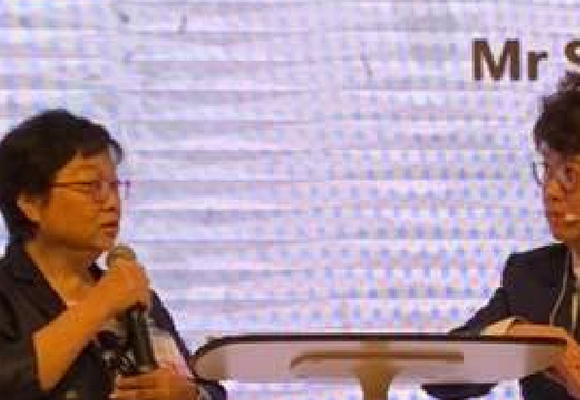What’s Really Causing Your Child’s Reading Problem?
As parents, we want the best for our children. We want them to be safe, successful, and happy. But for the parent of a child with an undiagnosed functional vision problem, these goals can be frustratingly elusive.
Typically, children who have an undiagnosed functional vision problem struggle with reading and writing. The frustrating part about the condition is that a visit to the eye doctor may not always reveal that there is a problem. In fact, many people with functional vision problems have 20/20 vision and healthy eyes.
What is the functional vision?
Functional vision is how the brain, eyes, and visual pathways all work together, allowing you to see and interact with the world.
These issues are separate from vision problems detected using a Snellen eye chart — in which you read letters from a wall chart.
The Snellen eye chart tests your ability to achieve normal visual acuity or sharpness of vision.
For most who struggle with this, lenses are prescribed to improve the acuity.
Functional vision, however, involves more than how the eye sees a 2D object like the eye chart. When a functional visual problem is present, one can have difficulty moving his or her eyes, focusing, or seeing three dimensional space.
It can also be hard to detect if only visual acuity is being assessed. It’s similar to having a torn meniscus in the knee. Although you are experiencing pain and a loss of mobility, an x-ray may not reveal any abnormalities.
Using the Snellen eye chart for a functional vision problem is the same concept. Like the x-ray, it’s not that the eye chart is inaccurate. It’s just not the right tool for diagnosing the problem.
What are some types of functional vision problems and their symptoms?
Before we get to what is needed for a proper diagnosis, let’s touch on the most common types of functional vision problems:
1. Poor Convergence: When looking at an object, the eyes should aim at the same point in space. If the eyes can’t focus on the same spot, then double or overlapping vision may occur.
2. Poor Laterality and Directionality: Laterality is the ability to distinguish directions, such as right or left. Directionality is the ability to interpret shapes when they are in different orientations. People with poor laterality and directionality may reverse letters or struggle to determine “right” from “left.”
3. Poor Form Discrimination: Inability to pick up on small differences between similar-looking objects. Here, the individual may confuse similar-looking words, such as want and what.
4. Poor Span of Recognition: This refers to one’s ability to process larger chunks of text. Someone struggling with a poor span of recognition may have to focus on a single word or even letter at a time. For this individual, reading can be a slow, grueling, unpleasant experience.
5. Poor Visualization: Visualization is the ability to create mental images, allowing the individual to conceptualize numbers and understand mentally how a word is correctly spelled. A person with poor visualization may have difficulty with spelling, math, reading, and comprehension.
6. Poor Tracking: When one follows a line of text in a book or sees a ball travel through space, he or she is employing visual tracking capabilities. When one struggles in this capacity, he or she loses place easily while reading or has difficulty catching a ball.
7. Poor Orientation: When one’s visual system can’t accurately perceive where they are in relation to surrounding people and objects, they may have clumsiness, difficulty sitting still, and poor performance in sports.
8. Poor Focusing: When someone’s focusing system (accommodation) is not working well, they may have difficulty keeping text clear when reading. They may rub their eyes frequently or experience headaches when reading.
Often the individual with a functional vision problem experiences a combination of these symptoms.
What is life like for the person suffering from a functional visual problem?
A functional vision problem turns routine tasks into monumental obstacles. For a child in school, copying notes from a chalkboard or reading a textbook – things that come easy for other students – are incredibly difficult.
How is it best treated?
Vision therapy can address the root causes of functional vision problems. It uses activities that improve the visual skills that aren’t working well and eventually “teaches” the visual system to work efficiently.
The activities integrate a variety of treatment devices including lenses, prisms, optical filters, computer software, visual-motor-sensory integration training devices, and more.
Vision therapy, conducted during regular office and home sessions, delivers the most effective results for restoring functional vision.
Who is ideally suited to treat functional vision problems and why?
Most vision screenings today involve reading letters on a distance eye chart; they do not measure one’s functional vision.
Performing a functional vision test requires special training and equipment. The developmental optometrists at The Vision Therapy Center are optometrists with this extra level of training. They can perform a comprehensive assessment of visual information processing, binocular function, and other visual skills.
Like any health concern, being able to successfully treat a functional vision problem begins with an accurate diagnosis. After all, you can’t treat the symptoms of a problem if you don’t know the cause.
The Neuro-Developmental Optometrsist at The Vision Therapy Center and Sun Time Vision specialist are experts at both diagnosing and treating functional vision problems, enabling patients to be successful in school, work and life.
But the first step toward the cure – and ending your child’s struggles in school – requires evaluating the problem.
Click Here to schedule an appointment or please call us at +603- 2110 3967.


